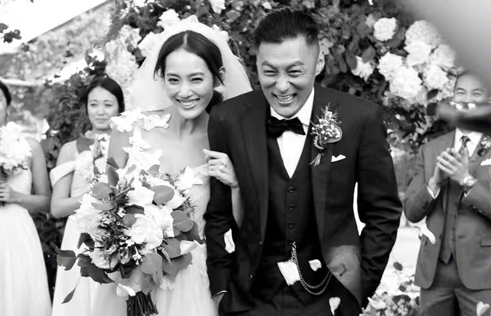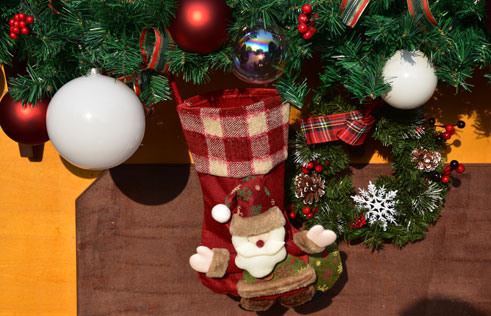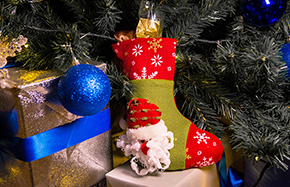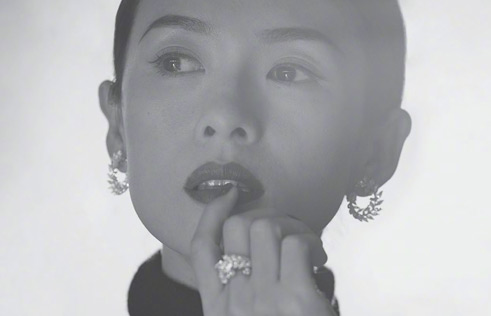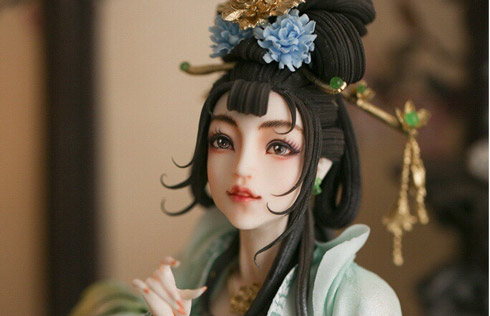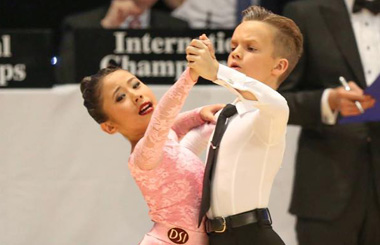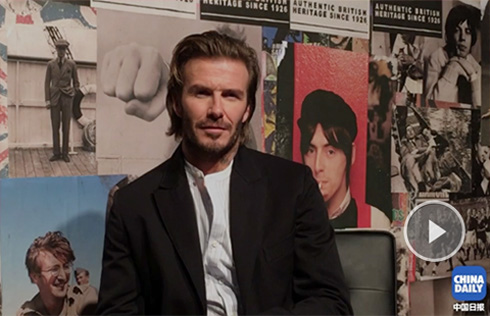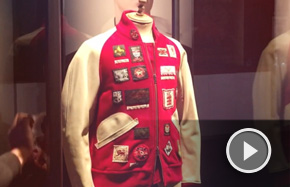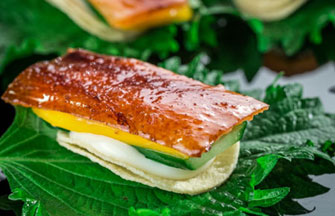Tibetan culture goes on display
Tibetan culture goes on display
The seven-day Shoton Festival, which began in August 10 in Lhasa, capital of Southwest China's Tibet autonomous region, featured Tibetan opera, folk performances, and yak and horse racing.
The title of the Shoton Festival, also known as the Xuedun Festival, is taken from the Tibetan words "yogurt" and "banquet." The event is an occasion to mark the end of the 100 days of self-cultivation and meditation for monks who were not allowed to leave the monasteries until June 30 in the Tibetan calendar. Tradition calls for the local residents to offer yogurt to them when they leave the monastery.
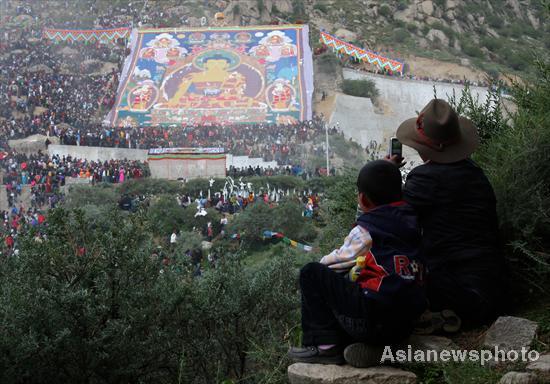 A giant Thangka painting of the Buddha is displayed near the Drepung Monastery in Lhasa, capital of the Tibet autonomous region, on Tuesday, the first day of the Shoton Festival. The annual event, which lasts seven days, is expected to attract 1 million visitors. Zhang Tao / China Daily |
"Yogurt is said to have the best taste and quality during this time of the year and could increase the monks' brain power," said Sonam Wangden, the deputy curator of the Tibetan Museum. "It also denotes happiness, longevity and everlasting love in Tibetan culture."
After the 17th century, Shoton developed from an exclusively religious observance into an all-out festival for local residents, he said.
Together with the Tibetan New Year, Shoton Festival is one of the most significant festivals in the Tibetan calendar.
"Part of the festival is also rejoicing in the upcoming harvest," says Liu Zhiqun, former deputy director of the Tibet Ethnic Art Institute. "In that sense, it is similar to the Han Chinese Mid-Autumn Festival, but on a much larger scale."
Similar to previous years, this year's celebration started with the "Sunning of the Buddha", where a 35-meter by-30-meter Thangka bearing the image of the Buddha is carried by about 100 lamas down the side of a back hill near Drebung Monastery. Throngs of believers pray for safety and happiness as they watch the ceremony.
Situated at the foot of the Mountain Gambo Utse, five kilometers from the western suburb of Lhasa, the Drepung Monastery is known as the most important monastery of Gelugpa in Tibetan Buddhism. The Shoton Festival originated there more than 1,000 years ago.
"It was just fantastic," said 61-year-old Yan Guiwen, a retired teacher from Beijing, referring to the "Sunning of the Buddha" ceremony. "I was totally awed by the holiness and piety of the devotees."
She said she will stay for two more days and will try to enjoy every aspect of the Shoton festival.
"It is my first time here and it may be the last because of my age and health. But this is really a once in a lifetime experience," Yan said.
Pete Winn, a visitor from Colorado in the United States, has been to the festival for the second time.
"I just can't get enough of it (the festival)," he said, "I especially love the Tibetan opera, in which you see the very color and richness of the Tibetan culture."
Official figures from the Lhasa Tourism Bureau show that the occupancy rate of hotels in Lhasa is well above 90 percent during the festival. Estimates predict more than 1 million tourists will visit Lhasa during this year's Shoton Festival, a dramatic increase from last year's 510,000.
"It's by far the busiest Shoton Festival I have encountered," said 29-year-old Mei Duo, a travel guide who has worked in Lhasa for five years. "But it also means good business and good money."
Related reading
The Shoton Festival of Tibetan ethnic group, which was inscribed on the first list of China Intangible Cultural Heritage, is one of the most important festivals in the Tibetan Buddhism and in Tibetan area. “Sho” means the Yoghurt and “ton” means banquet in the Tibetan language. So the Shoton Festival means the festival when people eat Yoghurt according to the explanation of Tibetan. As Tibetan operas are performed and Buddha paintings are exhibited at this time, it is also called “Tibetan Opera Festival” or “Buddha Exhibition Festival.” It will last from August 10 to 16 this year.
The Gelug Sect regulates that between April and June according to Tibetan calendar, Lamas can only practice Buddhism in monasteries to avoid treading and killing tiny lives. The ban will be lifted at the end of June. At that time, all lamas go out of monasteries and the laymen will offer them sour milk and perform Tibetan operas for them. After 1642, the Gandain Phodrang (Paradise Palace) of the Drepung Monastery became the political, religious and cultural centre of Tibet. Tens of thousands of people rushed there each June 30th to give sour milk to lamas and ask for blessings. The Tibetan Opera troupes and wild yak dancing troupes all came to perform. In this way, the Shoton Festival was formed.
Nowadays, the Shoton Festival has become a comprehensive celebration activity with the most influences in Tibet. It is also a grand meeting for commodity exchanges.
With the topic of “Visit Lhasa and enjoy Shoton”, the 2010 Lhasa Shoton Festival will witness art performances, forums, painting exhibitions and business exhibitions to boost the development of tourism and culture in Lhasa.
Buddha Exhibition Ceremony
The prelude of the Shoton Festival is the Buddha exhibition in Drepung Monastery, which is held at the foot of the Gebeiwoze Mountain. The tranquil valley becomes excited. With the sound of sutra bugle reverberating through the valley, about 100 lamas will carry a large-scale tangka portraying Qamba Buddha (or Maitreya) out of the Coqen Hall of the Drepung Monastery and step toward the west of the monastery where a special platform is set up for the Buddha picture exhibition.
At this moment, mulberry smoke arises from all directions, bugles resound and scripture-reciting goes on. The large tangka then will be slowly opened up. People rush up to offer white hada. Countless hada fly in front of Buddha’s picture, forming a great scene. In no more than two hours, the tangka will be rolled up again and carried back. People will not see it until the next year. Then people go to the courtyard of Gandain Phodrang to watch Tibetan Opera.
In the afternoon, the activities centre moves to Norbulingka. In the following week, the major activity is to watch the Tibetan Opera. During the Shoton Festival, the Tibetans bring along the old and the young and call on relatives and friends to the Lingka gardens. The Norbulingka and other parks of Lhasa are dotted with colorful tents.
Tibetan Opera Performance
Another important segment of Shoton Festival is Tibetan Opera, which one cannot miss. Starting from the second day of Shoton Festival, Tibetan Opera is performed from 11:00 am till dusk every day at Norbulingka and the Longwangtan Park opposite from the Potala Palace.
Otherwise, only one opera can last for several days. Then people go to the courtyard of Gandain Phodrang to watch Tibetan Opera. In the afternoon, the activities centre moves to Norbulingka. In the following week, the major activity is to watch the Tibetan Opera. During the Shoton Festival. The Norbulingka and other parks of Lhasa are dotted with colorful tents.
Nowadays, the Shoton Festival has become a comprehensive celebration activity with the most influences in Tibet. It's also a grand meeting for commodity exchanges. In addition, yak races and singing and dancing performances will also be shown during Shoton Festival, providing tourists a special experience of mysterious Tibetan customs.



